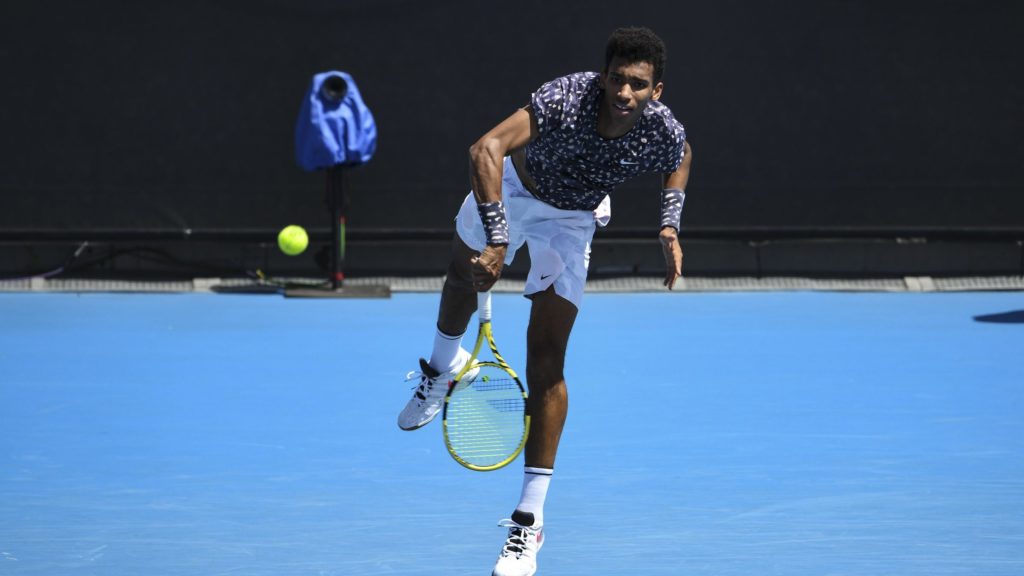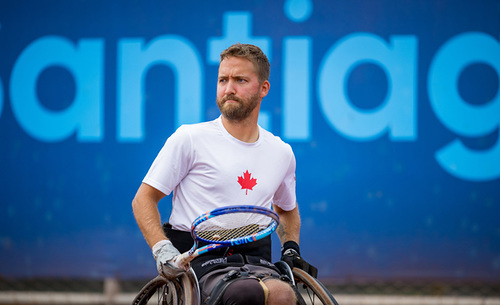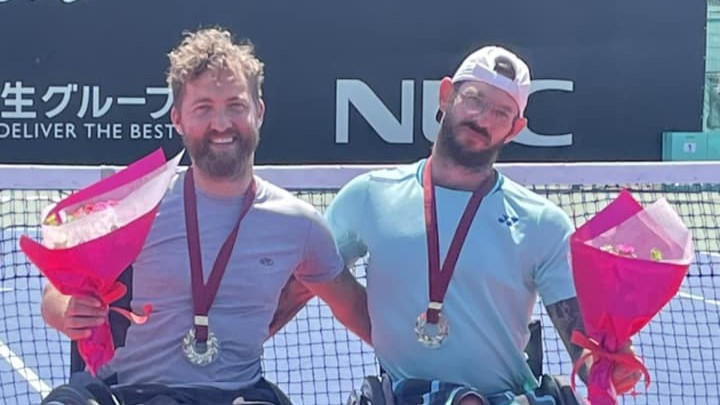
|||HERTOGENSBOSCH
Every February, Black History Month is celebrated to honour the legacy of Black Canadians, past and present. Here, Wendy-Ann Clarke writes about the impact Black Canadians have had on the tennis landscape in our country…
With black and brown faces increasingly arising in the top tiers of the world of tennis globally, there is no question that the sport in Canada is also becoming progressively more diverse.
As headway is made both on court and off, the notable upturn in the diversity of the crowd during events like Rogers Cup 2019 is evidence of change particularly when contrasted with what the optics may have been just 30 years ago.
Black Canadian contemporary stars such as Félix Auger-Aliassime and Francoise Abanda are still very much pioneers as the nation continues to forge a presence in tennis on the international stage.

One of the people helping the face of tennis to continue to evolve in Canada is long-time coach Lionel Eli, director of tennis at Tam Heather and the Banbury Tennis Club in Toronto.
Born in Barbados, Eli emigrated to Canada in the 1980s and since then has coached an impressive 24 young athletes to scholarships in the United States, many of whom have been black Canadians like himself. Some of the names on his scholarship recipient roster include popular Canadian style blogger and fitness model Sasha Exeter and three athletes from the Peterson Paul family – Shereen, Quinton and Nerissa, who continue to be involved in the sport today.
A former top-ranked track and field athlete in Barbados in the 400-metre and javelin, Eli became involved in tennis as a teenager when a shoulder injury kept him from competing on the national team.
“At the time a friend of mine said, ‘Since you like running so much, why don’t you come ball boy for me?’ So I did,” said Eli. “I fell in love with the sport and have been involved with it ever since.”
Breaking barriers
Eli went on to represent Barbados in several competitions including the Davis Cup. After moving to Canada, Eli acquired his Canadian level three certification and landed jobs nurturing athletes at various tennis clubs across the City of Toronto but says breaking through as one of the only black faces in tennis at the time wasn’t easy.
“I brought with me a lot of tennis experience because I was a past Davis Cup player and had an ITF coaching certification but had a difficult time landing a job at first,” Eli recollected. “I realized I was getting the run around but I persisted.”
Today Eli believes that things have opened up and says that for aspiring black Canadians in the sport, for the most part, “nothing stands in our way.” Due in no small part to the impact and influence of Venus and Serena Williams, Eli says he has seen a particular upsurge in the presence of young diverse girls getting involved.

“I think that the blacks in the professional sport have made a difference,” said Eli. “It took a while, but I can go back and say that the road was paved a little by Arthur Ashe to make the Williams sisters do what they did. Now the Williams have paved the way for a lot more like Sloane Stephens and others that are coming up.”
Michael Hopkinson, an accountant who is from Alberta, echoes these sentiments celebrating the revolutionary contribution of the Williams family. Born to Canadian immigrants from the island nation of Guyana, he competed in tennis at the University of Kentucky in the 1990s and upon graduating become hitting partners for the young teenage Williams sisters in Florida at the time.
“The sport still has so much to learn from the Williams’ because they just broke down all those barriers,” said Hopkinson. “I don’t make excuses when I play. When I lose it’s because someone else was a better player than me. They have such a great story and it teaches me so much about who I want to be as a person.”
“You don’t look like a tennis player”
Stereotypes about what it looks like to be a tennis player certainly impacted the journey of 23-year-old former player and now grassroots coach Stephan Harris. After starting in the sport at the age of four when his father, coach Clyde Harris who hails from Guyana, got him involved, Stephan says he had a hard time convincing his classmates his athletic passion involved a racquet.
“They would say, ‘Why don’t you play basketball? That should be your sport,’ ” laughed Harris who says he was always one of the taller students in his cohort. “In high school some guys even went as far as joining the tennis tryouts just to see me play and to find out if I was bluffing or not. They said, ‘Wow, I didn’t even know you could play all this time,’ even though I had told them for years.”

Many of the young athletes Harris coaches today are from immigrant families of diverse backgrounds. He says his desire is to be a role model for them to know that the sky is the limit in this sport.
“I get the wonders now to see all these different races on the court and it feels so much better than when I was a kid,” said Harris. “If I was growing up now playing tennis, I would feel a lot happier and more welcomed.”
Working as program manager at Doug Philpott Inner City Children’s Tennis, Harris recognizes that what he and other blacks in the sport are doing today may have never been thought possible just a few decades ago. Now a supervisor and program manager for nearly a year, he and the staff there have taught tennis to upwards of 6000 students from across the GTA.
Stephan says he takes pride in helping to change the perception of what it looks like to hold a leadership role in the sport.
“When I tell people I’m a tennis coach they still often react with surprise,” said Harris with a chuckle. “They never see it coming.”


